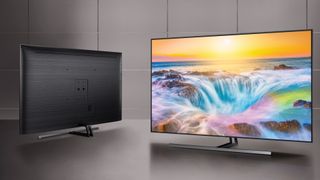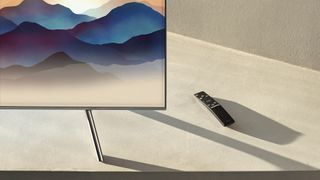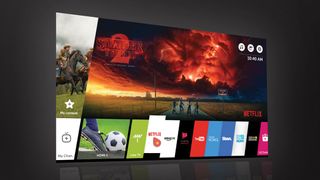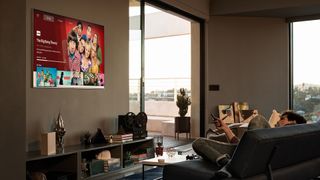대통령(수상)은 일하는 현장과 직장에 직접 가야 한다. 그런데 다양한 사람들의 희로애락,애환을 듣고 와야 하는데, 문통의 산업시찰은 삼성 회장과 똑같았다. 정치적 실패작이다. 문재인 대통령이 삼성과 엘지 기업의 디스플레이 투자를 격려했다. 그런데 발표문 자체는 행정부 수장이 아니라, 삼성 회장이 기술력을 선전하는 문구로 가득찼다. 삼성 측에서 써준 원고를 그대로 읽는 듯 했다. 행정부 수반인 대통령은 삼성 사기업 사장이 아니다. 소재 부품 장비의 국산화를 격려하는 것과 더불어, 삼성과 하청 업체에서 일하는 노동자들의 건강권과 노동권 역시 강조해야 한다.
대통령이 삼성 사장의 입장에서 신제품 신기술 발표회를 할 필요는 전혀 없다. 그것은 회사 경영진의 업무다. 행정부 수반으로서 대통령이 산업현장을 방문해서 반드시 수행할 업무는, 지역과 일터 주민들의 정치, 경제, 사회, 문화, 스포츠 전반적인 삶의 행복이 어떻게 증진되고 있는지, 그 행복을 가로막는 법률적 제도적 문제점들은 무엇인지를 주민들로부터 경청하는 것이다.
신기술 찬양만 해서는 안된다. 신기술과 삼성, LG의 세계 1위 다툼 이외에도, 사회적 갈등들 역시 존재한다.
노동자들의 건강권 역시 문제가 된다.
OLED (organic light-emitting diode) , 말 자체는 '유기 발광 다이오드이다. 'a light-emitting diode (LED) in which the emissive electroluminescent layer is a film of organic compound that emits light in response to an electric current.
얇은 막의 유기 합성물을 뜻하는데, 이러한 물질을 생산하는 과정에서 노동자들의 신체 안전에는 이상이 없는지, 그런 예방 작업은 어떻게 하고 있는지라도 물어보고 그래야 할 것 아닌가?
어쩌다가 박정희 산업시찰보다 더 못한 보여주기식 정치기획을 하고 있는가? 이해불가이다.
In the land of high-end displays, OLED — or organic light-emitting diode — technology is considered the pinnacle of picture quality. ... From awesome color saturation and ultrawide viewing angles to perfect blacks, OLED screens make most regular LCD displays look blah
(오가닉 라이트 이미팅 다이오드 :
diode: a semiconductor device with two terminals, typically allowing the flow of current in one direction only.
a thermionic tube having two electrodes (an anode and a cathode).
It's an expansion of contrast ratio, an improvement in brightness, and more. There are both OLED and LCD models that are HDR-compatible. The best HDR LCDs can produce brighter highlights than OLED, but OLED still has a better overall contrast ratio (dynamic range, if you will) thanks to its better black level
문재인
7 mins ·
존경하는 국민 여러분,
충남도민 여러분,
오늘 삼성디스플레이와 충청남도가 총 13조1천억 원 규모의 차세대 디스플레이 신규투자 협약서에 서명합니다.
삼성디스플레이는 디스플레이 산업을 OLED 중심으로 재편하여 세계시장에서 압도적 1위를 지키겠다는 각오로 과감한 투자를 결정했습니다.
지자체도 인프라 구축과 정주여건 개선을 지원하는 것으로 화답했습니다.
지난 월요일이 ‘디스플레이의 날’이었는데, 오늘 협약식이 ‘디스플레이의 날’ 10주년을 축하하는 듯하여 더욱 의미가 깊습니다.
국민들께 좋은 소식을 전해 주신 이재용 삼성 부회장, 이동훈 삼성디스플레이 대표이사, 양승조 충남도지사를 비롯해 함께해 주신 기업인, 대학, 연구기관, 관계자 여러분께 감사드립니다.
국민 여러분,
1966년 진공관 흑백 TV에서 시작한 우리나라 디스플레이 산업은 2000년대 들어 LCD 같은 평판디스플레이가 등장하면서 차원이 달라졌습니다.
당시 우리는 글로벌 디스플레이 시장이 LCD로 재편되는 변화의 흐름을 미리 읽고 과감한 투자를 했기 때문에 디스플레이 세계시장 점유율 1위를 달성할 수 있었습니다.
지금 우리 디스플레이 산업은 다시 한 번 새로운 도전으로 세계시장에서 앞서가고 있습니다.
LCD에 대한 후발국의 추격이 거세고 글로벌 과잉공급으로 단가 하락이 더해지고 있는 가운데 부가가치가 높은 OLED로 주력 제품을 바꿔냈습니다.
OLED 시장 형성 초기에 과감한 투자로 2018년 세계시장 점유율 96%라는 놀라운 기록을 세웠습니다.
이제 세계 디스플레이 시장의 판도를 바꾸며 1위를 지켜내는 것이 중요합니다.
지난 7월 LG디스플레이의 대형 OLED 3조 원 투자 발표에 이어, 오늘 삼성디스플레이의 신규투자 발표로 그 전망이 매우 밝아졌습니다.
세계시장의 흐름을 제때 읽고 변화를 선도해온 우리 기업에 존경과 감사의 말씀을 드립니다.
디스플레이 산업의 잠재력은 무궁무진합니다.
글로벌 OLED 수요가 지난해 232억 불에2024년에는 2배로 늘어날 것으로 전망됩니다.
빠르게 성장하는 블루오션 시장입니다.
4차 산업혁명의 핵심 분야이기도 합니다.
디스플레이는 스마트폰과 TV의 주요 부품이자 다른 산업과의 융합이 핵심인 분야입니다.
오늘 삼성디스플레이와 소재·부품·장비 분야 중소기업 간에 상생 협력 MOU가 체결됩니다.
특정국 의존도가 높은 디스플레이 핵심소재·부품·장비의 자립화를 위한 중요한 계기가 될 것입니다.
삼성디스플레이와의 협력을 통해 디스플레이 핵심장비를 국산화한 중소기업, ‘그린광학’의 사례는 핵심부품·장비의 자립화라는 면에서도,대·중소기업 상생 협력이란 면에서도, 좋은 모범이 되었습니다.
오늘 신규투자 협약식은 세계 1위 디스플레이 경쟁력을 지키면서 핵심소재·부품·장비를 자립화하여, ‘누구도 넘볼 수 없는 디스플레이, 제조 강국’으로 가는 출발점이 될 것입니다.
정부는 삼성디스플레이의 과감한 도전을 응원하며, 디스플레이 산업혁신으로 기업들의 노력에 함께하겠습니다.
첫째, 차세대 디스플레이 기술개발을 위해 과감하게 지원하겠습니다.
조금 전 저는 폴더블, 롤러블, 스트레쳐블과 같은 최신 디스플레이 제품의 시연을 보았습니다.
SF영화에서 보던 모습을 현실 속에서 보았습니다.
우리는 세계 1위의 OLED 경쟁력을 바탕으로, 차세대 디스플레이 시장도 선점해야 합니다.
정부는 이를 위해 향후 7년간 4천억 원의 대규모 예산을 차세대 디스플레이 기술개발에 투자할 것입니다.
이것이 마중물이 되어 민간의 투자가 더욱 활성화되기를 기대합니다.
둘째, 소재·부품·장비 기업에 대한 지원을 확대하고 상생 협력모델을 구축하여, 디스플레이 산업의 생태계를 혁신하겠습니다.
충남 천안에, 신기술을 실증·평가하는 ‘디스플레이 혁신공정 테스트베드’를 구축하여 소재·부품·장비 기업이 개발한 신기술이 빠르게 상품화되도록 하겠습니다.
OLED 장비의 핵심 부품 개발에 대한 지원도 강화할 것입니다.
디스플레이 대기업과 소재·부품 중소기업 간 공동개발 등 상생 협력에 대한 지원도 아끼지 않을 것입니다.
셋째, 디스플레이 전문인력 양성에 힘을 쏟겠습니다.
향후 4년간 2천 명 규모의 차세대 디스플레이 연구인력과 산업인력을 배출하여 세계 1위의 경쟁력을 지키겠습니다.
또한 중소·중견기업에 대해 맞춤형 기술인력 보호를 지원하겠습니다.
존경하는 국민 여러분, 충남도민 여러분,
디스플레이 산업은 우리나라 제조업 혁신의 근간입니다.
최근 출시된 ‘갤럭시 폴드’와 같은 획기적인 제품도 우리의 디스플레이 경쟁력이 없었다면 세상에 빛을 보기 어려웠을 것입니다.
이미 우리에게는 어려운 상황 속에서도 변화의 흐름을 읽고 과감한 투자를 실행해 세계 최고의 자리에 오른 경험과 자신감이 있습니다.
다시 한 번 차세대 디스플레이 시장을 선점하여 시장의 판도를 바꿔나간다면, 우리는 세계 1위 디스플레이 경쟁력을 확고히 유지할 수 있을 것입니다.
오늘 삼성의 신규투자를 계기로 충남의 새로운 도약도 가능해졌습니다.
오늘 행사가 지역경제와 일자리, 더 나아가 충남이 혁신성장의 중심지가 되는데 큰 도움이 될 것입니다.
디스플레이 신규투자를 국민과 함께 축하하며, 대한민국 경제가 충남에서부터 다시 활력을 찾아 미래로 뻗어가길 기대합니다.
감사합니다.
2019년 10월 10일
대한민국 대통령 문재인
Samsung vs LG TV: which TV brand is better?

Looking into getting a new television? We don’t blame you: every year a new round of smart TVs get released to market, with bigger panels, better visuals, and overhauled processors just demanding a place in your home. IFA 2019 is set to add even more to a crowded market – but for now, when it comes to LG vs Samsung TVs, which one should you choose?
Let’s face it, most televisions look largely the same at first glance. Sure, some will be larger or thinner than others, and both LG and Samsung have experimented with new form factors for their high-end sets – have you seen LG’s rollable OLED yet?
But at the end of the day, you’re buying a rectangle, and sometimes it can be hard to figure out what really makes one different from the other.
That’s why we’ve put together this guide for comparing Samsung vs LG TVs, so you can know confidently which brand is making the right TV for you.
- Best Samsung TV: your guide to buying Samsung in 2019
Samsung vs LG TV: overview

Image Credit: Samsung
Samsung and LG are two large-scale manufacturers that sell smart TVs for both high and low price points, though with somewhat different panel technologies for their high-end sets.
Both are South Korean manufacturers that sell televisions globally, with large presences in both the UK and US – unlike Panasonic or Philips, who don’t have licenses in North America – with a large install base and broad range of televisions launched each year.
It’s hard to compare pricing, given how many sets Samsung and LG both launch each year, running from 32-inch LEDs and budget 4K TVs to super-sized 8K sets that run you thousands of dollars / pounds. Whatever size, shape, resolution or budget you’re looking for, either will have you covered.
Samsung and LG are also fighting over territory in the highly competitive smartphone market: both manufacture Android phones, though we won’t be comparing their handsets in this particular guide.
Smart TV: Tizen vs webOS

WebOS Smart TV platform (Image Credit: LG)
Both Samsung and LG use their own proprietary smart TV platform, and each has their own personal flavor.
LG has been leading with webOS – a minimal, stripped back smart TV interface – since 2014. It uses a horizontal menu bar for commonly used apps, streaming services, and inputs, with customizable placement so you can pick and choose where your favorite apps sit on the dashboard. The latest webOS 4.5 software also brings in secondary menus that appear when hovering over an app icon.
Samsung’s Tizen platform doesn’t differ hugely in its layout (you could say it was influenced by the former), though doesn’t have as impressive a search algorithm as LG’s ThinQ AI software.
But what of voice assistants? LG’s OLED and Super UHD sets come with Google Assistant built in, and some limited compatibility with Alexa-controlled devices. Samsung uses its own (somewhat worse) first-party Bixby assistant, though again only for mid-range or premium sets – and with the option to use Google Assistant or Alexa through third-party devices.
Dolby Vision vs HDR 10+

Image Credit: Dolby
Both back a slightly different format for high dynamic range (HDR), with LG packing Dolby Vision into its premium range of OLEDs and Super UHDs, while Samsung favors HDR10+ for its premium TVs.
Both formats use what’s called dynamic metadata to tailor the output of the television to the content being displayed, so scenes of dark underground caverns or well-lit drawing rooms vary the levels of brightness, contrast, and picture processing accordingly.
Dolby Vision is really the more advanced format, with 12-bit color gamut instead of the 10-bit HDR10+, and is also more commonly found. (While there are a number of HDR10+ shows on Amazon Prime, you won’t find it on Netflix, Chromecast Ultra, or Apple TV 4K.)
Admittedly, preferred HDR format is only really a concern at the higher end of the price range, but those spending big should think carefully about which services they’re likely to want HDR content on.
QLED or OLED?

Samsung Q6FN QLED TV (Image Credit: Samsung)
Today’s premium television market is divided into two panel technologies: OLED and QLED (basically an LED-LCD screen with quantum dots).
OLED, which stands for ‘organic light emitting diode’, is a kind of TV panel that can emit its own light, instead of having light shone through it.
This enabled brilliantly thin TV displays, and the ability to individually control the brightness of individual pixels. OLEDs are known for their vibrant colors, deep black levels, and overall low brightness. There’s often talk of ‘burn in’ images on OLED screens, but much of this is anecdotal and you’d probably need to be working the set very hard for this to become a problem.
All OLED panels are manufactured by LG Display, so even if you’ve got a Sony OLED in your home, you have LG to thank.
QLED, on the other hand, is a proprietary technology developed by Samsung. QLED uses a filter of quantum dots to enhance color and contrast, and make do with a number of dimming zones to vary brightness across the screen – rather than being able to do so with each pixel individually. QLED TVs are also a lot brighter than OLEDs (thousands of nits versus hundreds) though can struggle to show both light and dark images at the same time as a result.
We’ve gone into this debate in more detail in our QLED vs OLED guide, though for now it’ll be enough to say that OLED is generally suited to high-quality video formats in dark viewing environments, while Samsung’s sets lag on contrast (comparatively) but make up for it with a bright and impactful display. Keep in mind though, both are highly impressive premium panel technologies, and most of you will be very happy with either.
Samsung vs LG TV: which should you choose?

Image Credit: LG
It’s been a rocky period for both LG and Samsung. LG Display has had to spend a lot on research and development for its OLED panels, and reported a first-quarter operating loss this year (via Reuters) – though with the bet that growth in OLED will end up balancing this.
Samsung meanwhile is expecting a large drop in profits
in 2019 after lower-than-expected smartphone sales and TV demand. Samsung has plans to compete with LG’s OLED tech, with its own QD-OLED (quantum dot-OLED) hybrid, but unstable finances have seen those plans get pushed a few years back.
The takeaway here is that, regardless of either company’s financial health, both are focusing on their current display technologies, and aren’t going to suddenly stop supporting any of the new TVs they’re currently bringing to market. So which set you pick should really just be down to what you want in your living room.
If you want a bright, dazzling QLED screen to light up your home – or a solid budget option like the NU7100 – Samsung is your best bet. If you really want the most impressive picture quality out there, regardless of price, nothing currently beats LG's OLED panels for color and contrast (see: LG's C9 OLED).
If you’re happy with your current television, but will want to upgrade in another few years – well, it could be a whole different story.
'한국정치 > 민주당' 카테고리의 다른 글
| 유시민, KBS 제가 사장이면 보직 해임시킨다는 발언 평가, (0) | 2019.10.11 |
|---|---|
| 한겨레 하어영 기자, 윤중천이 윤석열에게 접대했다는 보도, 이에 대한 반론들 (0) | 2019.10.11 |
| 조국 논란, 김경록 인터뷰 (0) | 2019.10.10 |
| 조국 장관 왜 사퇴했는가? 향후 문재인 정부 과제, "경제민주화"에 매진하라 ! (0) | 2019.10.09 |
| 한글날 광화문 집회 조국 퇴진 + 조국 수호 2개 집회 - 10월 9일 (0) | 2019.10.09 |
| 장상환 교수 해결책, 조국 사퇴가 검찰 개혁 동력을 키우는 방법이다. (0) | 2019.10.09 |
| [검찰 개혁] 검사동일체 원칙은 2003년 삭제됨. 검사 이의제기권리 2009년 첨가 (0) | 2019.10.09 |





